Porch Diaries is being exhibited at Counihan Gallery (233 Sydney Rd, Brunswick) from 18 June – 18 July 2021 and a small selection of prints from the series have been displayed at the Blue Mountains Cultural Centre, Katoomba, as part of the group show This Changes Everything.
The Porch Diaries photobook is currently in production, set for release in mid-late 2021. You can pre-order your copy from Alana’s website.
Kristian: What was the most extraordinary experience while you were perched on your porch to produce this work?
Alana: The realisation that engaging warm greetings, light conversation and making pictures with strangers could be enough to improve and sustain my mood, motivation and mental health through a challenging winter.
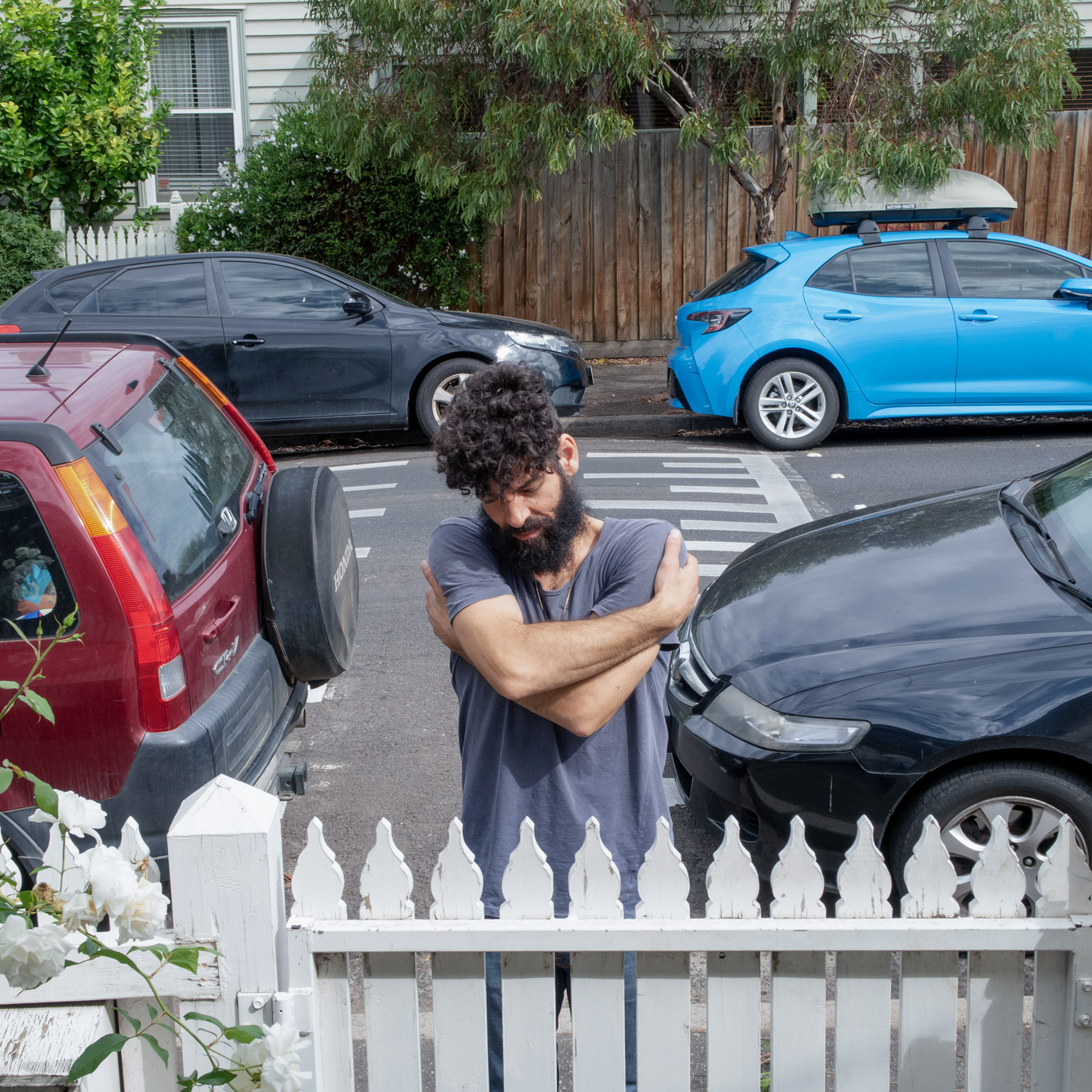
18 March, 2020
Did you uncover anything about your neighbourhood and/or its residents that would not have been possible to discover without the extended period of time you spent observing?
I learned that walkers often steal lemons from the tree across the street. I noticed that some people eat more Ubereats than home-cooked meals. I got to know the exercise, coffee and dog walking routines of my neighbours. I found out when people lost their jobs or lost loved ones. Like many others, I observed the kindness and care within the neighbourhood, shown through gifts on doorsteps, sharing of produce, and simple check-ins with each other in those months we were at home.
The photographs make visible a community of people living their lives side-by-side, but rarely seen together. Being physically present on the street, and engaging in conversation on a daily basis built relationships that would probably have been little more than a nod or wave before lockdown. I’ve gained friends and feel supported by neighbours for the first time living in the city. I feel a sense of belonging and also a sense of responsibility and motivation to contribute and participate beyond listing Brunswick as my address.

18 March, 2020
Perhaps inspired by Louis Daguerre’s picture of a man and his shoe-shining boy made on the Boulevard du Temple, Paris, in 1838, were any of your subjects choreographed?
A few were choreographed entirely, some were directed heavily and others were observation and documentation without interference. For example, I asked the cellist and violinist to stop by before their street concert and asked them to bring their instruments. Whereas the image with the two tradies and their orange suits I first observed as they packed up their gear at the end of their shift. The wind caught their suits, lifting them up into the air for a moment before releasing them again. I asked them to be photographed, then directed them to make the image I wanted, recreating that moment. My favourite images are the ones that I didn’t direct at all: the neighbour’s cat hissing at the dog, the neighbour chopping wood and piling it into a shopping trolley, the friend swigging wine from the bottle, my sister’s legs sticking out the end of her van and my other sister hoisting her son to the sky.
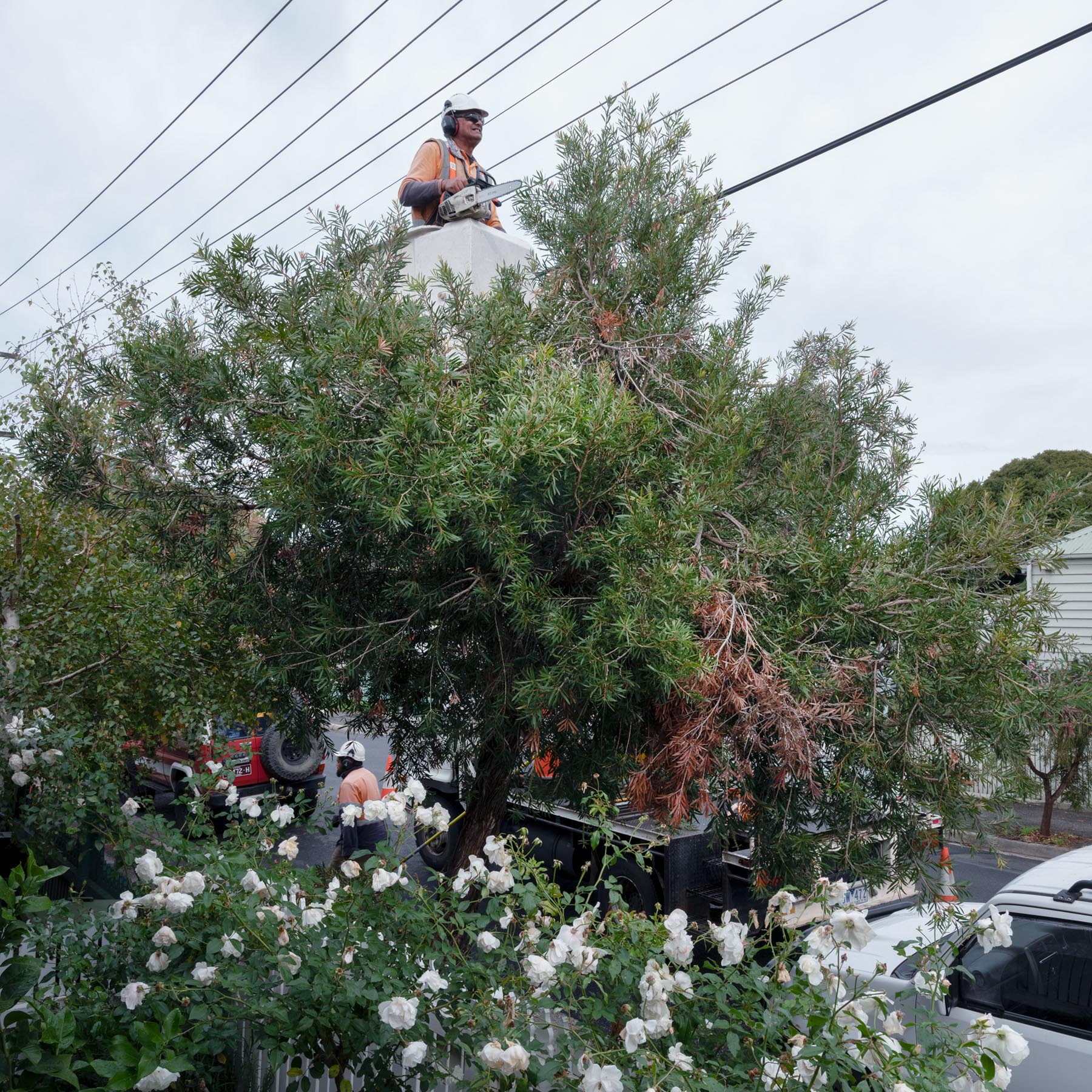
30 April, 2020
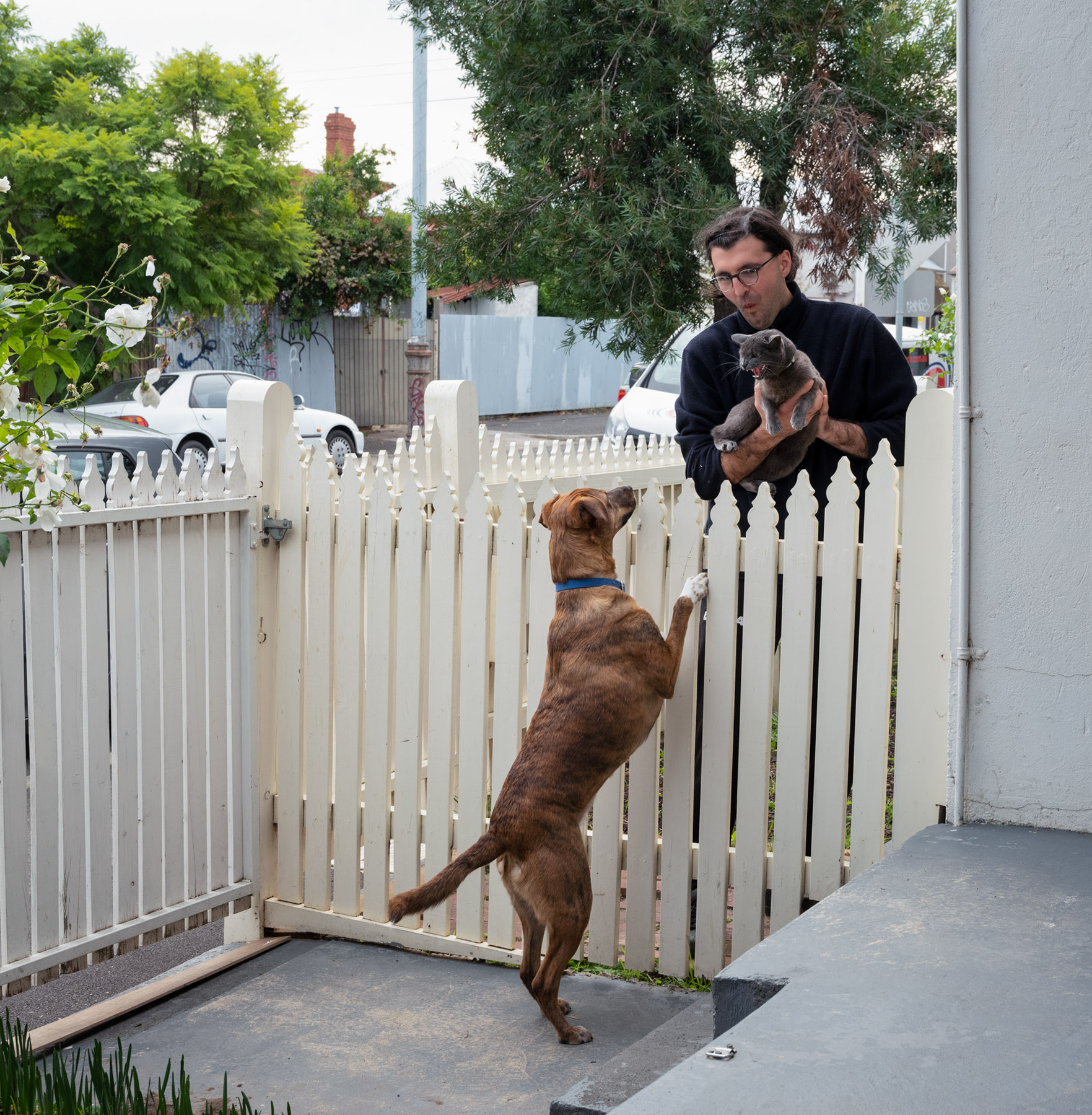
28 April, 2020
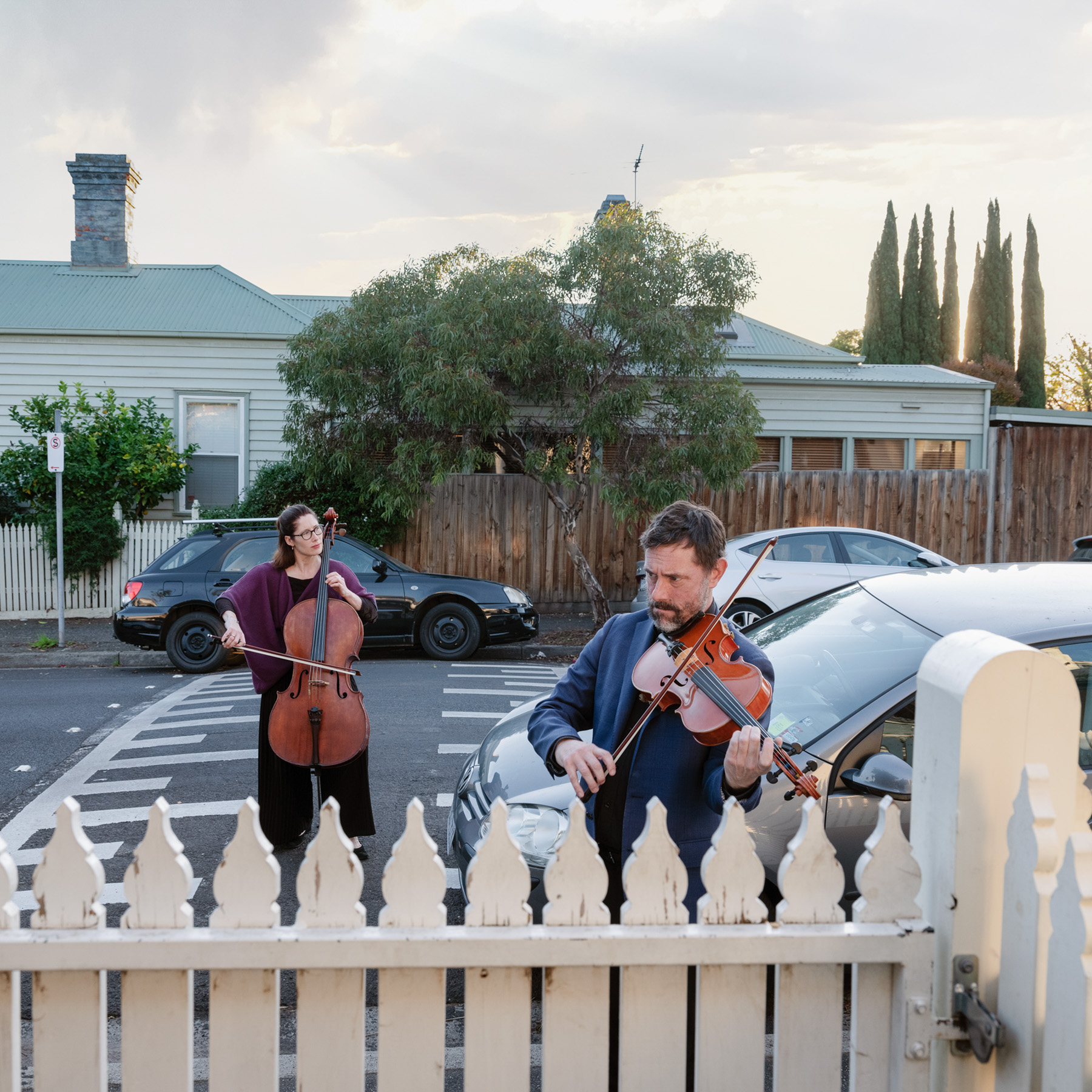
18 May, 2020
If you could jettison somebody here in a Covid-safe bubble, ultimately, who would you love to photograph: a.) dead and b.) alive?
Alive: I was introduced to Laurie Anderson’s work some years ago at a workshop and became so inspired by her experiments with storytelling across performance, film, music, and virtual reality. When I held the Porch Diaries performance back in May, she was one of my references in terms of how I wanted to deliver the spoken parts and how I imagined the music might weave in and around the images on the screen to tell a story to a live audience. And when I was at the beginning of the project, wondering if it was something worthwhile continuing, the lyrics from her song From the Air were jumping around on the page under my pen: “This is the time, and this is a record of the time.” Somehow, the simplicity of that idea, to simply record the time and not overthink it, became a motivating thread throughout the making of the series, book and exhibition. It would be nice to photograph Laurie and say thanks.
Dead: Lou Reed. I don’t know so much about him or the Velvet Underground honestly, but I know he was Laurie Anderson’s partner for 21 years before he passed away. I would like to make a portrait of them together. Their love seemed like a rather wonderful union of the heart and mind.
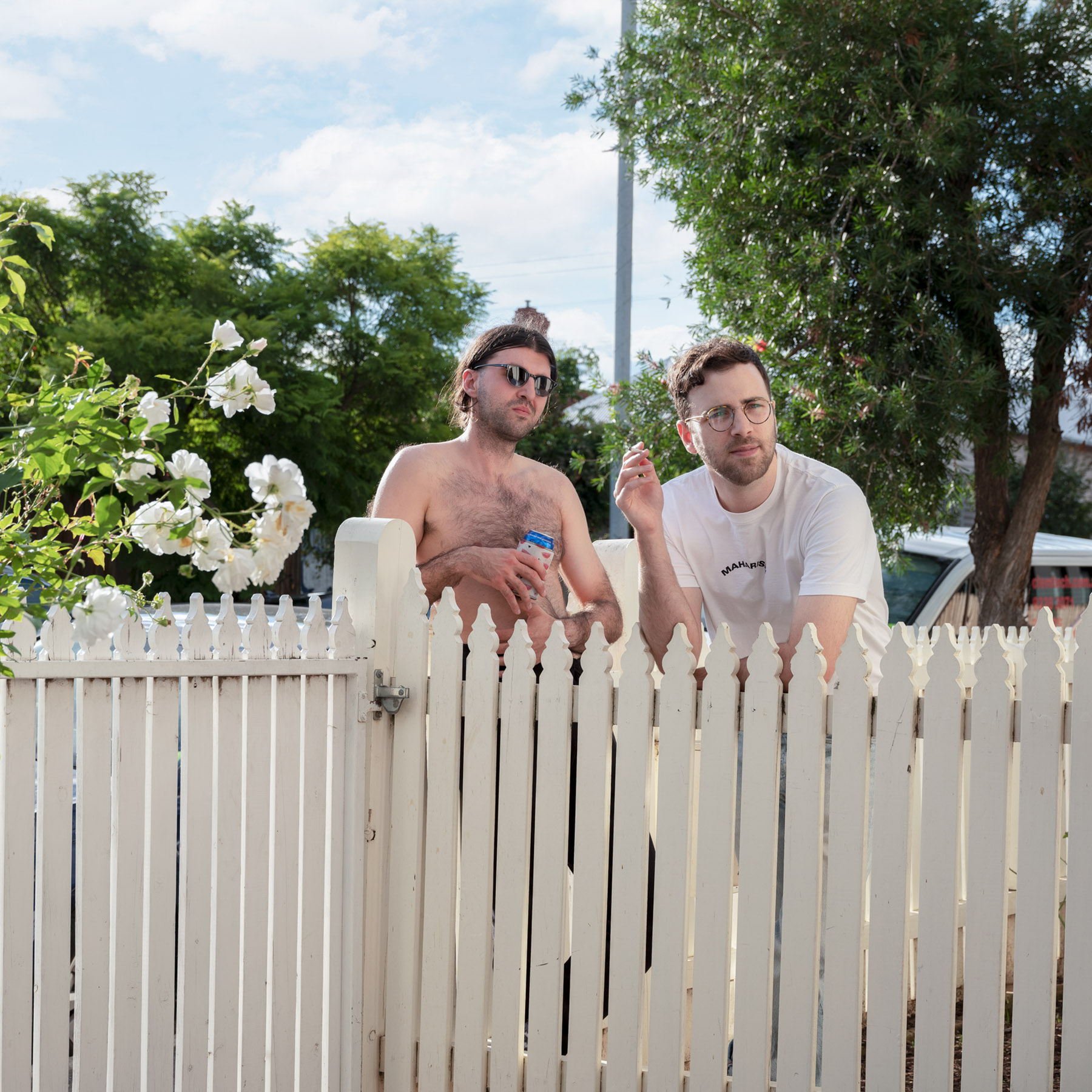
10 April, 2020
What a huge influence Laurie Anderson is across all ages, art forms, etc. I discovered her on some obscure radio program when I was an undergraduate student printing in the darkroom and was immediately stunned! Not like a mullet, but in excitement. Such a visionary: Ethics is the Esthetics of the Future from Songs for Lines/Songs for Waves (1977) – how right she was. What are your favourites?
I love the film Heart of the Dog, a documentary that meanders through Laurie’s reflections on life and death, told through the death of her fox terrier Lola-Belle. I often listen to the soundtrack on its own, it works without the visuals for me. At the very end, Laurie credits Lou Reed and in that moment you realise that while he isn’t mentioned until that point, the whole piece is actually about her coming to terms with his death. Always makes me cry that last line! I’ve found myself listening to Songs from the Bardo, her reinterpretation of The Tibetan Book of the Dead, as a sort of meditation as I go to sleep lately. Recently, she did an NPR Tiny Desk Concert to mark 40 years since Big Science was released. I’ve never seen Laurie perform so I loved seeing this. The first song, Let X = X is my favourite and the last, O Superman, was the track that introduced Laurie to people beyond the art world. Oh, and if I need a little encouragement on what I’m doing or where I’m going, I listen to her advice to young artists.
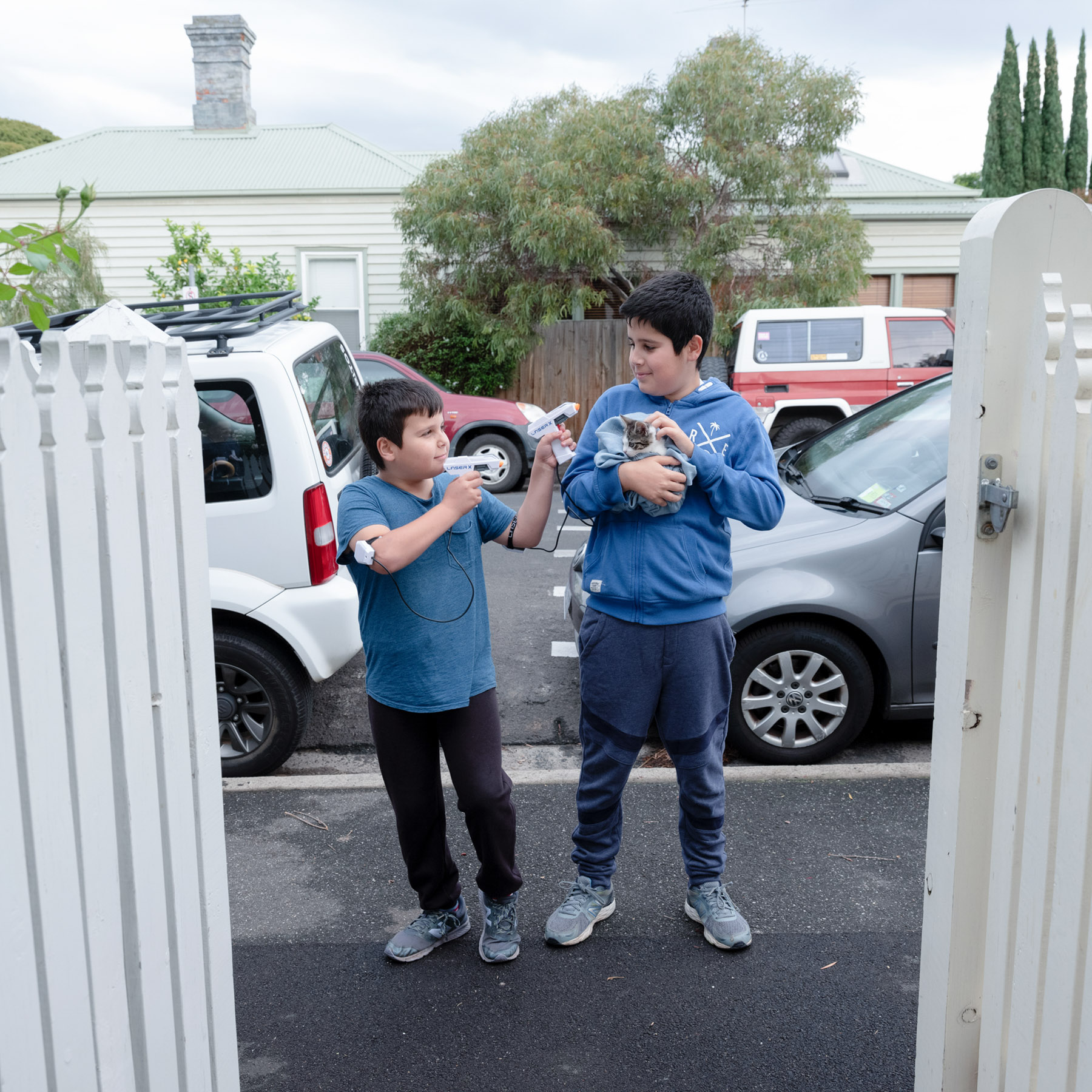
29 April, 2020
I would like to mention a few references that I really admire that come to mind when I think about your project and I also thought about during the performance. Can you respond to them in relation to your work and this particular project?
Peter Funch’s photobook 42nd and Vanderbilt
Noah Kalina’s project Everyday
Wayne Wang and Paul Auster’s film Smoke
I had to do some homework to be able to answer this question, thank you for the prompt! I wish I had known about these projects before making Porch Diaries, particularly Wayne Wang and Paul Auster’s film Smoke, what a treat! The scene when Paul is looking at Auggie’s photographic project is quite profound: “I mean it’s just one little part of the world but things take place there just like everywhere else, it’s a record of my little spot.” – Auggie Wren in Smoke.
All three of the artists you’ve referenced are more democratic and rigid in the making of their work than I was with Porch Diaries and, in some ways, I envy that. I can see that a lot of strength in their work comes from strict rules they set themselves: Auggie stands at the same spot on the street and makes a single image from his shopfront at the same time every day. Similarly, Peter Funch stands on the same spot on a street in New York and photographs rush hour from 8.30am – 9: 00am everyday. Noah Kalina might have varied the time of capture for his selfie series Everyday, but the crop and frame of his daily record of his face remain nearly identical. When so many elements are consistent and the images are presented together, we naturally pay more attention to elements that do change from frame to frame.
Porch Diaries shares some of that rigidity in that I remained mostly in one physical spot to make each image, the fence and the road are both consistently visible in all photographs. I mostly used the same lens and focal length, the same camera body, the same aperture and shutter speed, but there are variations for sure. I was not entirely democratic in shooting everyday or every person. I photographed when I felt like it, influenced by mood, weather and motivation. I approached people who walked past and looked interesting and/or seemed open to being approached. Not everyone responds well when a stranger says hello. I’ve vacillated between feeling okay with those inconsistencies and wishing I had been more rigid, but in the end, (and too deep into the process of making the work to change) I accepted the inconsistencies as a very human element of making the work in a pandemic. Lockdown was challenging and I didn’t want to hide that I took days off or I fled the city for weeks on end.
All three references you have mentioned, and Porch Diaries too, play with the idea of visualising long stretches of time and work as a sum total of parts, rather than individual images. Each image on its own is nothing special – mundane perhaps – and very similar to the next at a first glance, but something magic happens when you look at the images as a collection. Minute differences in seasons, people and weather can be observed, entire narratives can unfold within the collection, but they can only be discovered on closer, longer inspection of the work.
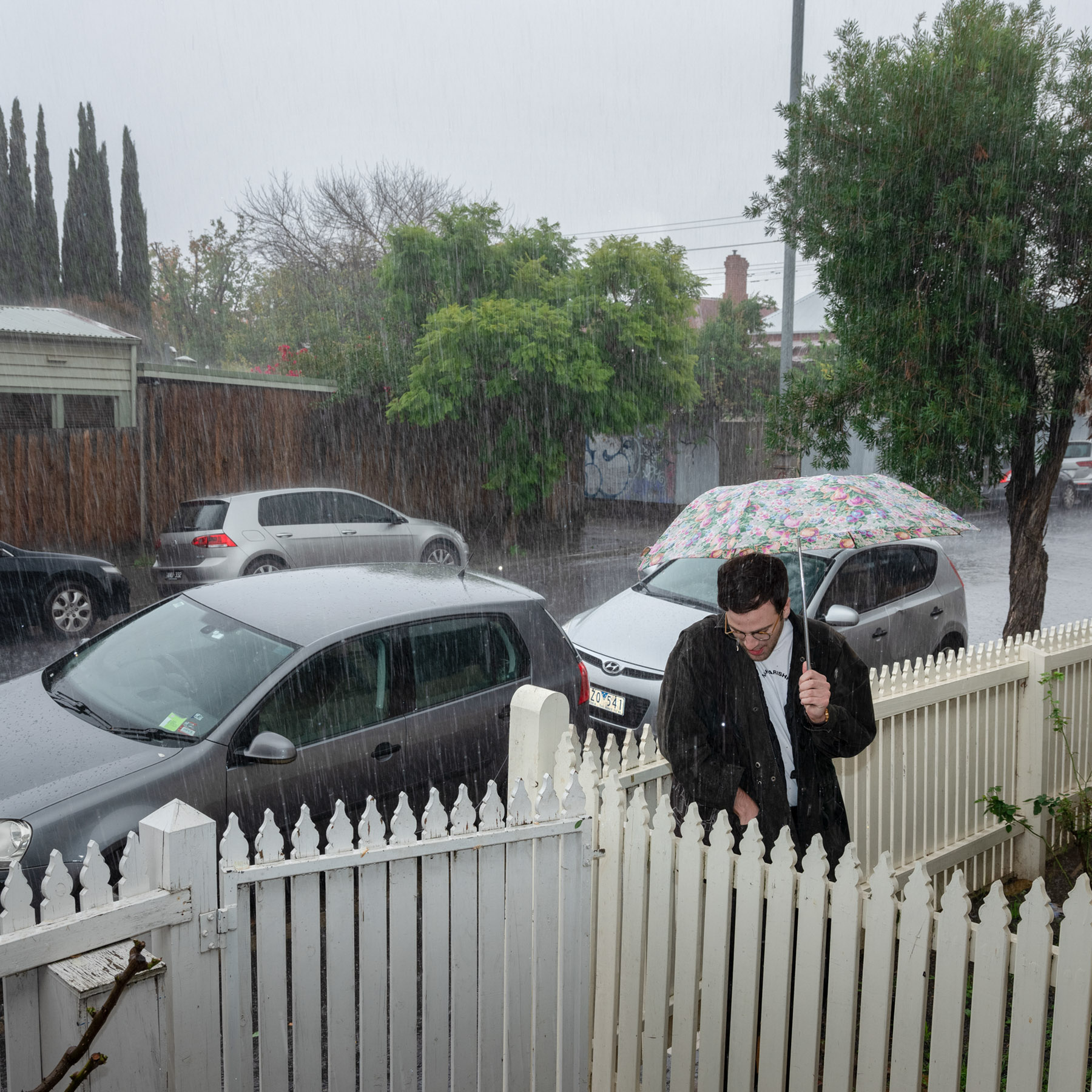
10 May, 2020
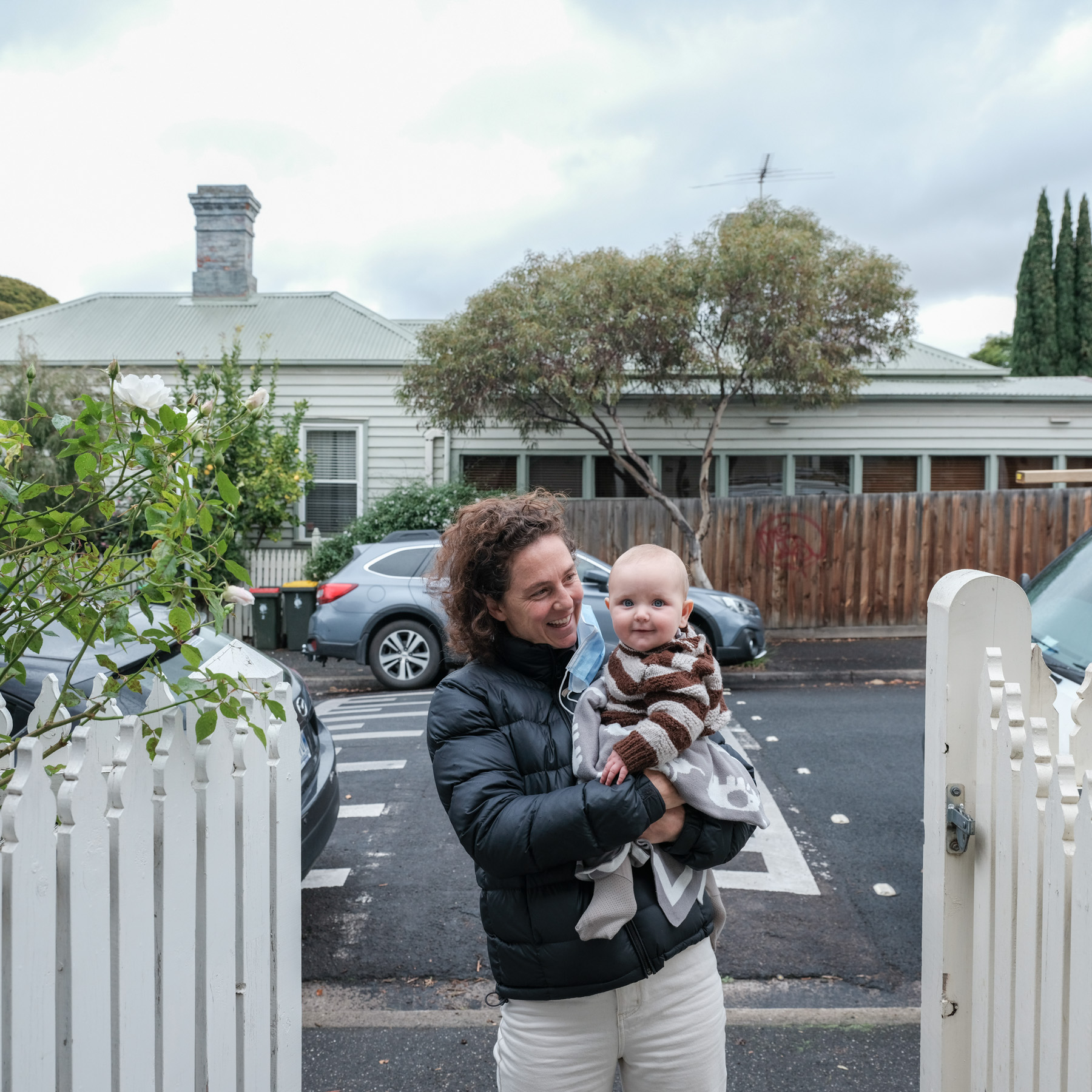
3 June, 2021
Beyond the obvious photographic tropes, has time always played a role in your work or is it perhaps something new?
I wouldn’t say it’s entirely new but perhaps Porch Diaries was the first overt exploration of time. I’ve been interested in holding the audience’s attention for longer periods of time through my earlier projects And Holland Has Tulips and Visau Ni Draki (a change in the weather) and challenging what we’re told about short attention spans, but that is different time-related experimentation to what you’re referring to and the projects mentioned earlier.
During lockdown I enjoyed Dayanita Singh’s thoughts on the archive being a body of work in itself, a life’s work that grows in value as time passes. Somehow, thinking of making pictures in this way, with the aim of an archive at the end, alleviates some of the relentless pressure to show and produce for me and puts the focus back on shooting, slowly building an archive over time. I’ve been trying to apply this thinking to my family archive since and enjoying the act of photographing far more.
Speaking of family archives and time-based projects, recently I was really moved by the series by Deanna Dikeman titled Leaving and Waving. Have you seen it? Perhaps it falls into your photographic tropes category, but I found that the way she methodically photographed her parents saying goodbye over years so simple, yet, so relatable and moving.
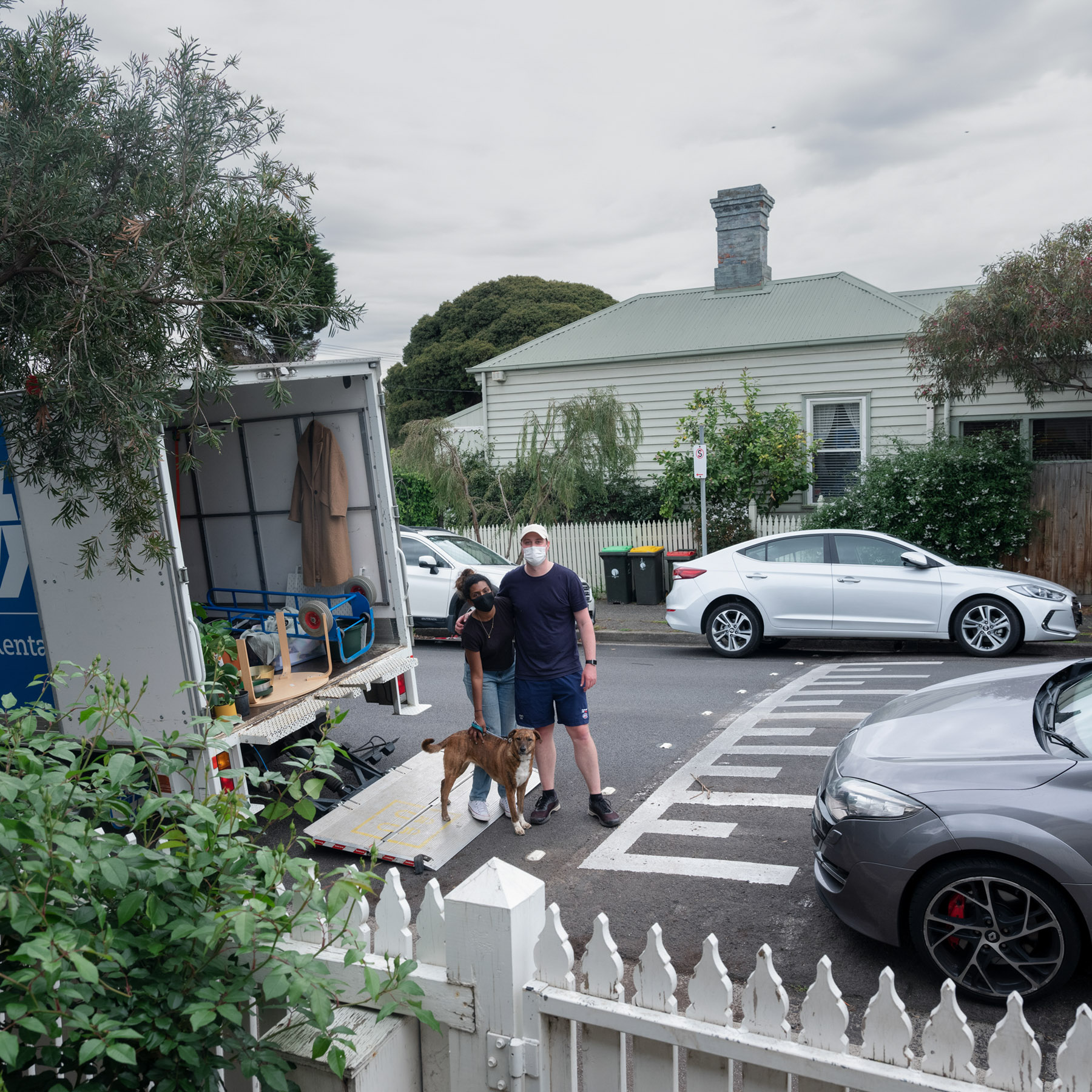
16 October, 2020
Yes, great work. I think what takes Leaving and Waving beyond other more obvious projects and references to photography capturing ‘an instant in time’ is dedicated duration and it also has a very tender personal element like the relationships you built with people and friends passing by your porch. Who did you mostly connect with?
That’s true and I’m happy you sense the tenderness in Porch Diaries also. It’s meaningful for me that loved ones, friends and family are included in the work because the series documents a moment in time in my life and relationships as much as it does the community during the pandemic. When I look at the series as a whole, and now that I know who I have photographed a little better, I can see I mostly connected with people who lived in my immediate physical vicinity — my nextdoor neighbours and those who live in the surrounding streets. We now know each other by name and when lockdown 4.0 returned, it was comforting to know that I have that community of care around me.
Your approach to funding the book and launching it were inspiring. Can you describe what the event was for people who were not there?
I’m still not quite sure what exactly to call it – it was a live performance, it was a concert, it was a book page-turn, and there was some spoken word. It doubled as a fundraiser for the photobook. Essentially, I sat on stage for about 45 minutes and edited the Porch Diaries book dummy, turning pages and handwriting notes like you might do to mark where you want changes or alternative photographs. I played with extra images to show portraits that were not included in the book and hint at the (often painful) process we go through to reach the final selection. I rigged up my phone above me as a webcam (as luck would have it, Alec Soth posted a very informative instructional on the topic) and, via my laptop, projected the footage up onto the wall so that the audience could see what I was doing on my working desk. I read the text components of the book aloud and cellist Joesphine Vains performed alongside me, selecting pieces that evoked a certain mood that was suitable for the images, often pieces she had performed in her own lockdown project, a series of street concerts called Letterbox Concerts performed on Friday evenings outside her house for neighbours and the community.
I found the performance very emotional, not only because I know you, but because the images, sound and live element worked so well together – I felt like I was beside you working on an edit. It felt somewhat like a celebration as we were heading out of this terrible situation. What were reponses like?
Similar to what you felt, quite a few people told me they were emotional through the performance and afterward. It was rewarding to hear that for me, I knew I wanted to create a very cosy, intimate and reflective experience. Life returned so intensely after lockdown and I don’t think I was alone in being a bit taken aback by the velocity of it, like it was hard to catch my breath. Quite unintentionally, I think Josephine and I created the circumstances that acted as some form of reprieve from it all and release, a prompt to recognise what we went through together and the emotion that came along with it.
I am very interested in the relationship between music and photography. It seems you are too?
Yes, music playing and appreciation has been important in my life and I love the combination of music and photography. I have a short attention span and don’t always find myself able to gaze at still photographs for very long, yet I can get lost in listening to music for hours. When music is added to photography, something shifts for me. I feel more emotionally connected to the work, I’m more attentive and far less distracted.
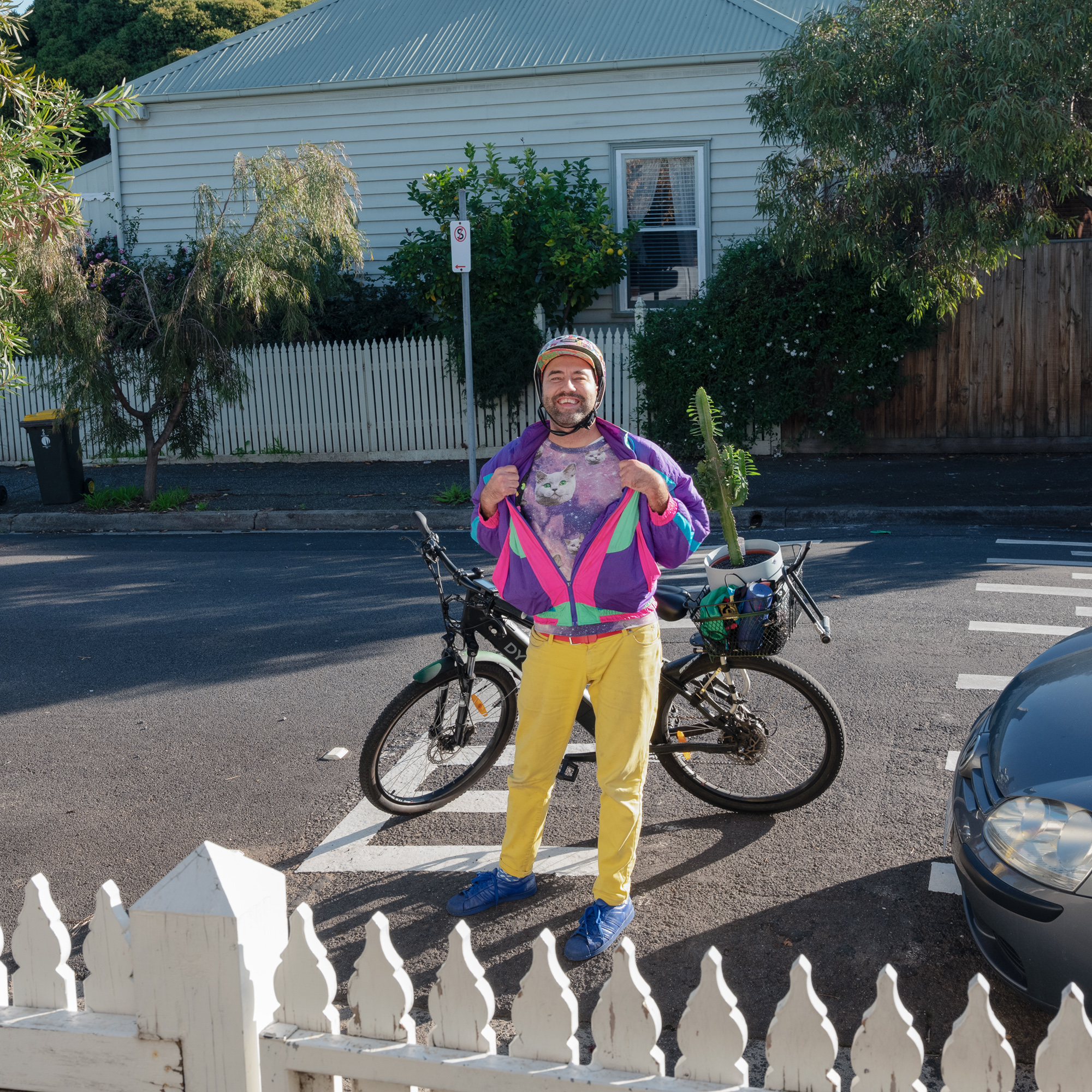
25 May, 2020
Can you tell me how the performance/publication launch came about with cellist Josephine Vains? And how this helped to fund the publication?
During lockdown, I started the Porch Diaries and Josephine started Letterbox Concerts and I was so moved by Josie’s skill and generosity in not only sharing the music but explaining a little for those of us in the crowd who didn’t have the classical music history or knowledge that perhaps her usual audiences might. I asked Josephine to be photographed for Porch Diaries and through our conversations it was clear that we shared an interest in connecting with our community and sharing our work with people beyond the art or music worlds.
Fast forward to April when I was developing a fundraising strategy for the book. I was part of MATCH LAB this year, a fundraising program for artists run by Creative Partnerships Australia, and was encouraged to launch my Pozible campaign with an in-person event. The idea is that you use the event to secure some early support and pre-orders so that when you launch online to the public, the campaign already has some momentum. People are apparently more likely to contribute when they see others have already done so. Fascinating, right?
Anyway, I approached the team at Tempo Rubato, a live music venue near my house, to see if I could hold such an event at the space and they encouraged me to think about a concert rather than a private fundraising event. I thought immediately of Josephine and very quickly the idea to combine our two lockdown projects in a collaborative concert came to be. It was one of those things that just felt very organic and right from the beginning.
What role did collaboration play in the partnership for the launch event?
Collaboration with Josie and Georgina Imberger, owner of Tempo Rubato, was the primary reason the launch event worked in the first place. Both women were so open, trusting and encouraging, creating an environment where I felt confident to experiment and share ideas knowing I had their extensive experience and expertise to guide me. Though, I definitely had a what the f*ck am I doing? moment on the night, realising I was about to perform to 100 people, I am thankful I went with it and didn’t ‘overcook’ things. The event was one of the most rewarding experiences of this process and has given me many ideas about how I’d like to share work in the future.
Working with Josephine was an insightful experience. As photographers there are elements of change, spontaneity and happy accidents in the moment of capture, but when it comes to presenting the work there is a lot of extreme control – the perfect print, the precise exhibition design, the controlled gallery environment or printed book. Nothing much is left to chance in that final stage. Performance is something altogether different and requires a lot more vulnerability. Josie encouraged me to improvise on stage rather than create a very tightly scripted set of actions and be open to ‘winging it’ a little based on how things unfolded and felt on the night. It felt very foreign to me initially, and risky, but once I got my head around the idea of making things up on the spot (and making sure I had materials to draw on when needed), ultimately, it was an utterly liberating experience.

21 March, 2020
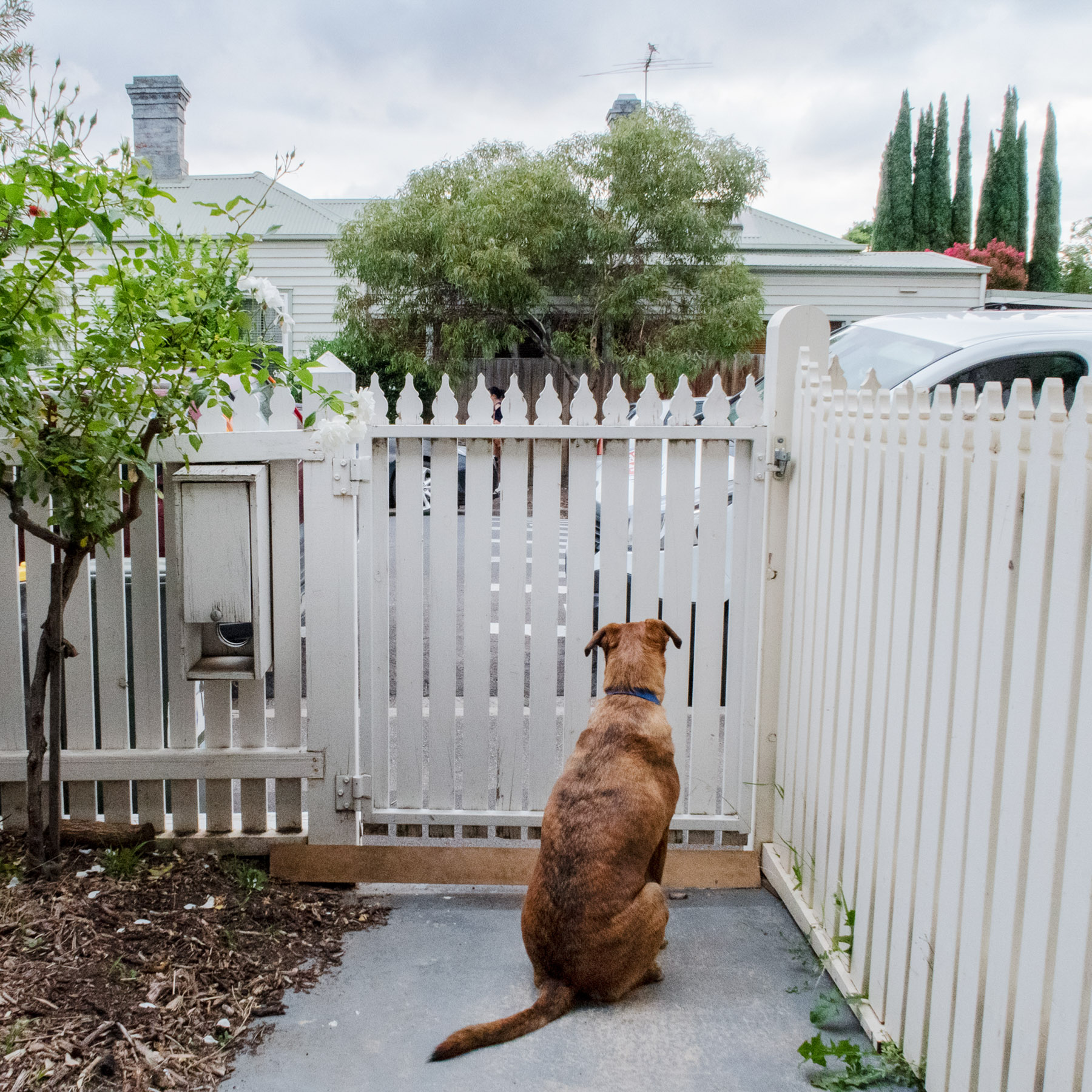
20 March, 2020
Have you heard Joshua Bonnetta’s soundtrack to Ron Jude’s photobook LAGO?
No, but I’m listening now as I write this. Love the snippets of ambient sound coming through with the insect noises and the singing. The clanging is a little industrial for me but I imagine that would very much add to the experience of looking at Jude’s work and I like the collaboration. Sound is so amazing for cementing you in a place and taking you outside of your surroundings. It makes me think immediately of Richard Mosse’s immersive video work The Enclave. I was completely captivated by that installation when it showed at National Gallery of Victoria because of the way motion and sound were combined to elicit an emotional response from the audience – one of sustained anticipation and dread. It was so good and uncomfortable! 45 minutes of discomfort! Not particularly enjoyable emotions but Ben Frost – Australian-Icelandic musician, composer and sound designer, and director – did an incredible job of using sound and composition to transport us to the Congo and what it might feel like to have danger and the threat of violence and death ever present.
You seem quite moved and influenced by sound, perhaps you’re using the wrong medium? Have you experimented with sound in other works of yours?
I’ve wondered the same thing myself! The flip-side of being more of a music-appreciator than a music-maker is that I get the opportunity to collaborate with wonderful musicians and sound designers. Mosse and Frost’s work was the inspiration for Visau ni draki (a change in the weather), a video work I made with James Milsom, a sound designer and composer. We wanted to transport the audience to four Fijian coastal villages to communicate both the feeling of daily life alongside experiencing the loss and displacement associated with climate change. I sent James a bunch of audio recordings from my time there and once I had laid out the visual sequence, he composed a score to accompany the imagery.
The project was published in some international media including The Age, The Guardian and The Washington Post. Was there much attention from it being out there and largely distributed through international media?
Sometimes it is hard to make direct links between media coverage and outcomes. The things I’ve noticed are an increase in the number of people passing by to be photographed and a few more books being pre-ordered, both very welcome outcomes. Mainly, I find it has been handy to have this kind of third party endorsement to talk about my work with others. People seem very willing to trust me and the work more in terms of participating, promoting or partnering.
Would you like to tell us about the design of the photobook and how that has translated to wall in the exhibition at the Counihan Gallery (just around the corner from where you live)?
The exhibition is absolutely drawn from the book design by Heidi Romano. After quite a lot of deliberation, we decided to sequence the series chronologically as it felt like the best way to play with this idea of passing time. As the book progresses, you see recurring characters, you see masks appear and disappear, you see puppies turn into dogs, seasons and the quality of light change, beards get trimmed and haircuts.
We all felt time slow down during lockdown and I think sequencing the book chronologically, with date stamps that show the capture date, helps visualise that experience not just for the subjects but for me as the photographer too, spending days and weeks out there on the porch. The reader can place themself within the date and remember what they were doing in March, when lockdown started or in July, when the second lockdown came (and I fled to the country for six weeks for a break).
Heidi kept the design of the book quite traditional and structured, the images are located on the same place on every page, and the only thing that really changes is the date and the faces within the frames. This too was a deliberate decision, because nothing much did change except the passing of time and the different people passing by – the book design emphasises that.
The exhibition is very simple – A3 prints pinned to the wall in chronological order. We tried to fit as many as we could into the space while maintaining this single line around the gallery to reference the single physical perspective I took in making the work.

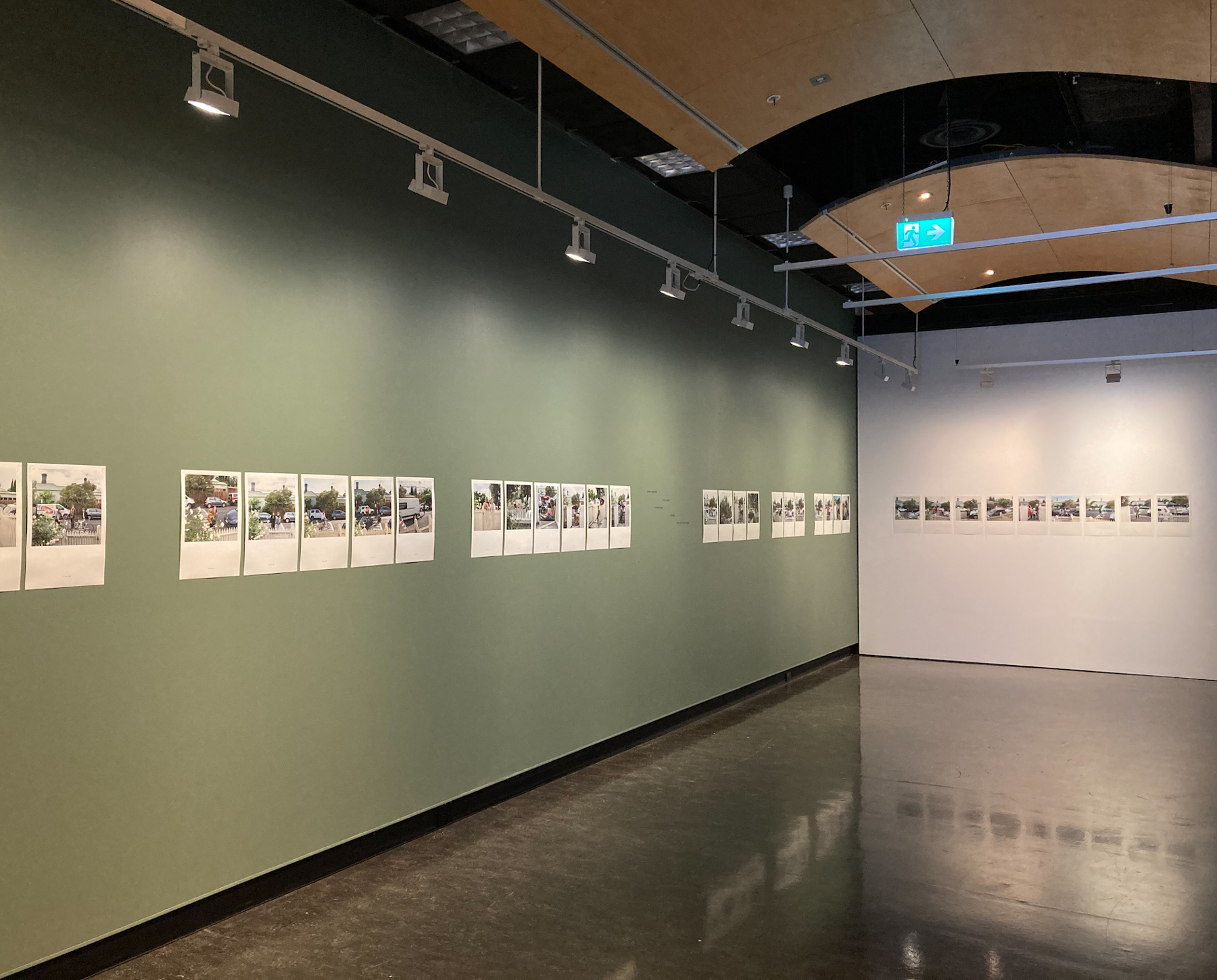
I was always hesitant to start a ‘Covid project’, but recently I listened to an interview with British photographer Mark Power and he mentioned that this is an important moment in history and that as photographers we might regret not responding?
It’s interesting you felt hesitant, on one hand I felt it was important to respond and tried a few different ideas before landing on Porch Diaries. But I also felt that hesitancy in the form of self-doubt. I sensed ‘eye-rolling’ in regard to Covid projects and I was told people would get tired of Covid related work and not be interested in an exhibition or a book. What I kept coming back to was that even if that was true, and people were tired of it now, it is likely to be different in 20 or 40 years time.
What other ideas did you test out before landing on Porch Diaries?
I started off thinking I would photograph my street in a similar way that Edward Ruscha did with Every Building on Sunset Strip (1966) or Philip Quirk did with Oxford Street in Sydney in 2009. A friend had introduced me to George Georgio’s American Parade (which I adore) and I imagined these scenes, with residents spilling out from their homes into their front yards for me to photograph, stitching them together to create a portrait of the street over lockdown. I realised quickly that unless I was to pre-organise those scenes, I would be unlikely to stumble across them unless I spent hours prowling the street. Not only did that feel a little creepy, but it also didn’t seem very practical, realistic or something that I could sustain. So, I flipped the idea and photographed the people on the street from my own house.
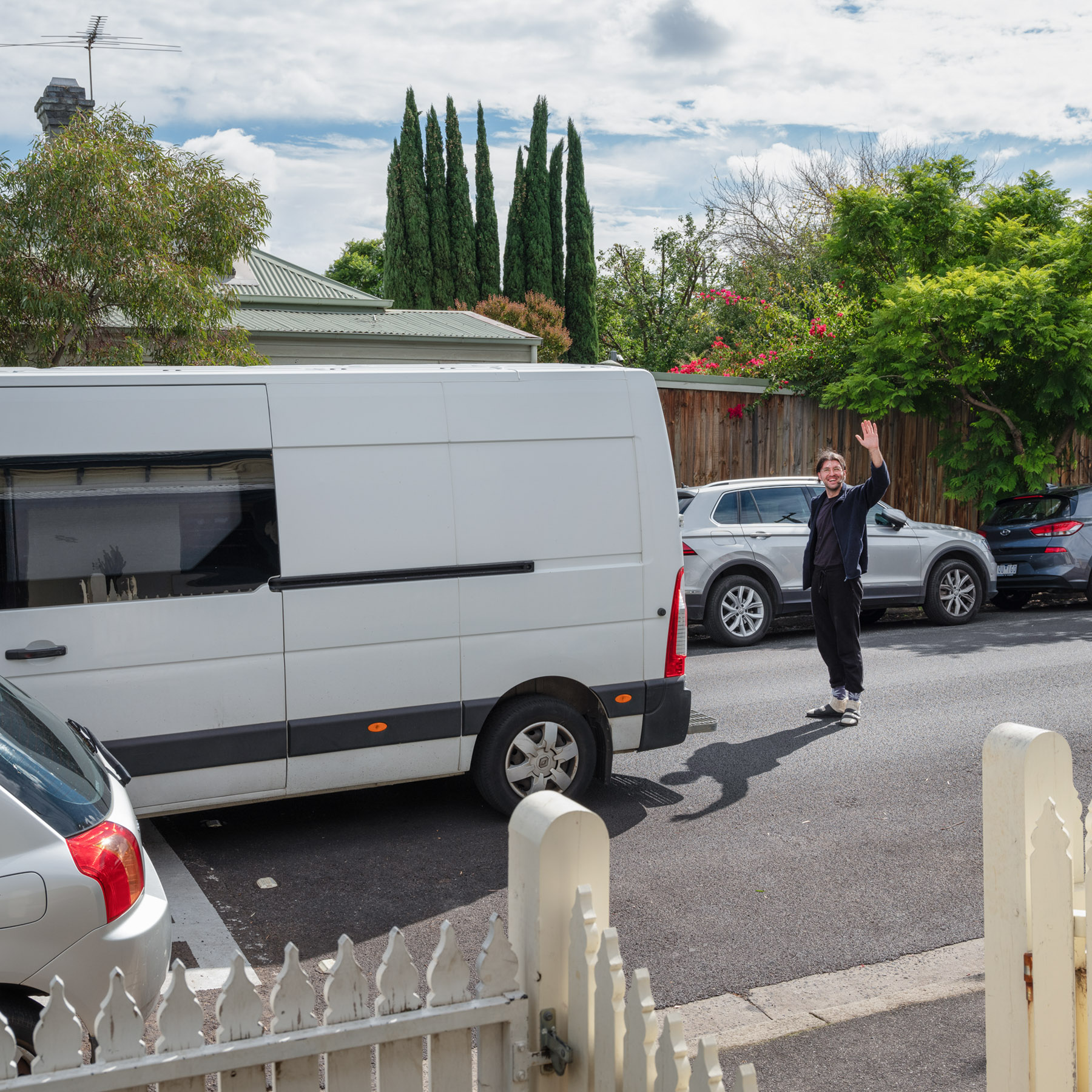
10 April, 2020
There have been a plethora of Covid projects from all around the world. Have you seen any other projects that interested you?
We featured Melbourne artist Sophie Gabrielle in Issue #31 of Unless You Will Journal and I absolutely loved the work she created during lockdown. Sophie used images found in the Wellcome Collection, a free museum and library in the UK that aims to challenge how we all think and feel about health, to explore desire, touch and longing.
I also loved State of Disaster by Australian artist Tajette O’Halloran. Tajette used experimental analogue techniques while working from home to make some very evocative images of her family during lockdown .
I was recently introduced to Simon Robert’s project The Daily Sea, which he made every day for 56 days from when the Covid-19 lockdown in the UK started. I like that the changing nature of the sea reflects the tumultuous emotions and uncertainty that came with the pandemic. Paired with covid death rates, I think this work is a more poetic and thought-provoking way to speak to what so many people were experiencing.
Beyond the wonderful live soundtrack produced by Josephine Vains, is there an alternative soundtrack you would suggest to viewers of the project?
The American singer-songwriter and musician Bill Withers died during the making of Porch Diaries and I played his albums a lot during the early weeks so perhaps Lovely Day might work. It’s full of hope and gratitude and it’s hard to feel down when you listen to it.
Writing in a diary-esque fashion seems key to the project and especially the publication – is there a paragraph or line that speaks to the heart of your experience making this work from your text?
“Not searching, I found something I was yearning for, I hope to find it again.”

